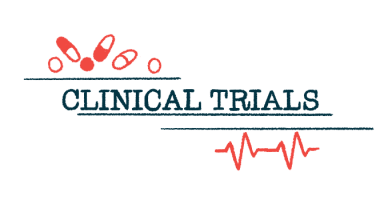Respiratory issues and difficulty swallowing
Amyotrophic lateral sclerosis (ALS) is a progressive, neurodegenerative disease that affects the muscles involved in swallowing and breathing, potentially leading to issues such as malnutrition and weight loss, along with aspiration and lung infections.
Around 85% of people with ALS experience dysphagia (difficulty swallowing), usually in the later stages of the disease. The majority of people living with ALS also will experience breathing difficulties.
ALS treatment and therapy, including speech and respiratory therapy, along with adaptive aids and medications, can mitigate the symptoms, allowing a person with ALS to be as healthy as possible.
How ALS causes difficulties in breathing and swallowing
ALS, also known as Lou Gehrig’s disease, is caused by the progressive degradation of motor neurons in the body, affecting the upper and lower motor neurons. The first has an impact on how communication happens between the brain and spinal cord, while the latter affects communication from the spine to the muscles of the body.
As the disease progresses, muscle weakness can lead to paralysis, affecting a person’s ability to swallow and breathe.
Progressive weakness in the muscles of the face and neck — known as the bulbar area — can cause trouble with chewing and swallowing.
Breathing difficulties for someone with a neurodegenerative disease such as ALS can be caused by three factors: respiratory muscle weakness, dysphagia with possible aspiration (breathing in a foreign object such as food), and poor cough due to weak abdominal muscles.
About 3% of people with the disease will have diaphragm weakness at diagnosis, also known as respiratory onset ALS, which has a poor prognosis.
Respiratory failure is the primary cause of death for people with ALS.
Signs of swallowing and breathing issues
Early signs of dysphagia in a person with a neuromuscular disease can be difficult to link to the condition. These can include:
- a “wet voice”
- silent aspiration
- loss of weight.
However, the onset of ALS-related swallowing problems can be predicted by a number of clinical signs, such as the progression of the disease, the type of ALS, and respiratory impairment.
Some of the signs of ALS-related dysphagia are:
- difficulty chewing
- loss of tone in the lips, tongue, and other muscles used for swallowing
- food sticking in the throat
- excessive saliva production (sialorrhea)
- frequent coughing or choking
- food or liquid coming out the nose or spilling out of the mouth.
ALS disease progression can also cause breathing issues. Some of the signs of this are:
- difficulty breathing during minor exertion
- shortness of breath while lying down
- nocturnal awakenings and daytime sleepiness
- fatigue
- morning headache and poor concentration
- difficulty clearing bronchial secretions.
Management of swallowing difficulties
Swallowing difficulties can be managed with a number of different approaches, with the goal of adequate nutrition provision and avoidance of choking.
A number of screening tools can be used to monitor dysphagia in patients with ALS, including the modified barium swallow study in which a special X-ray technique can help identify the reasons behind trouble swallowing.
Difficulty swallowing increases the risk of food or liquid going into the windpipe, which is called aspiration. Aspiration can cause infections and other complications. Silent aspiration, in which affected individuals do not sense when something enters into the windpipe, is especially dangerous.
Diet modifications
It’s helpful to seek professional help regarding recommended ALS diets and nutritional information. Consultation with a dietitian familiar with neuromuscular diseases can be done to successfully make modifications to diet, as this will change along with the course of the disease.
Calorie-dense foods and supplemental nutritional beverages are recommended to stave off a chronic energy deficiency and weight loss in people living with ALS.
Other modifications can include cutting food into smaller bites, using thickeners on thin or runny foods, moistening very dry foods, and taking nutritional supplements.
A decrease in the ability to taste food has been linked to a perceived lower quality of life in people with ALS. A nutritionist can suggest ways to make food more enjoyable to eat.
Swallowing strategies
Speech therapy involves strengthening the muscles involved in speaking and swallowing, and a speech language therapist can provide advice on swallowing strategies. These might include:
- taking more time to eat
- eating in an upright position
- taking small sips and bites
- drinking liquids separately from foods
- pureeing foods.
A gastrostomy tube can work around swallowing issues by delivering nutrition directly to the stomach.
Medications and additional options
Medications can help reduce excess saliva production (sialorrhea) and ease swallowing. These include glycopyrrolate, propantheline, amitriptyline, nortriptyline, and scopolamine.
In some cases, botulinum toxin injections can be administered into salivary glands, while low-dose radiation therapy can be performed on those with symptoms that are hard to control.
Monitoring breathing capacity
Breathing difficulties can be monitored and managed with a number of different approaches, such as breathing and coughing exercises through to ventilation, with the goal of improving quality of life and survival.
Screening tools to monitor lung function in someone with ALS include:
- forced vital capacity test measuring the amount of air expelled after taking a deep breath
- peak expiratory flow rate measuring the highest speed of exhalation following a maximal inspiratory effort
- maximum expiratory/inspiratory pressure measuring abdominal and chest muscle strength
- arterial blood oxygen saturation assessed with a pulse oximeter.
Help for breathing problems
A change for the worse in a person’s forced vital capacity can cause their ALS healthcare team to look at methods for supporting their ability to breathe.
Noninvasive ventilation is the most frequently used treatment for ALS-related breathing difficulties. Room air is provided through a nasal tube or face mask, compensating for weakened chest and diaphragm muscles, and avoiding the presence of too much carbon dioxide in the blood (hypercapnia), especially at night.
While face masks are well tolerated, there is concern they do not work as well for those people with the bulbar form of ALS and that the masks can cause pressure ulcers.
Sleep apnea — the temporary stopping of breathing during sleep — can be a common issue for those living with ALS. Noninvasive ventilation can be of benefit here.
Therapy
Physiotherapy can help people living with ALS improve breathing capacity and the ability to cough, such as training for how to use a cough assist device.
Respiratory therapy may improve lung function and efficiency of coughing in people living with ALS. This might involve breathing exercises and respiratory muscle training.
Ventilation aids
Cough assist devices can be used to clear secretions from the airway.
Once ALS-related breathing difficulty worsens, an invasive mechanical ventilator — also known as an ALS breathing machine — can be used to help a person breathe. This involves a surgical tracheostomy (a procedure to insert a tube into the windpipe through the neck) and attachment to a ventilator, to be used 24 hours a day.
ALS News Today is strictly a news and information website about the disease. It does not provide medical advice, diagnosis, or treatment. This content is not intended to be a substitute for professional medical advice, diagnosis, or treatment. Always seek the advice of your physician or other qualified health provider with any questions you may have regarding a medical condition. Never disregard professional medical advice or delay in seeking it because of something you have read on this website.
Related articles

 Fact-checked by
Fact-checked by 




